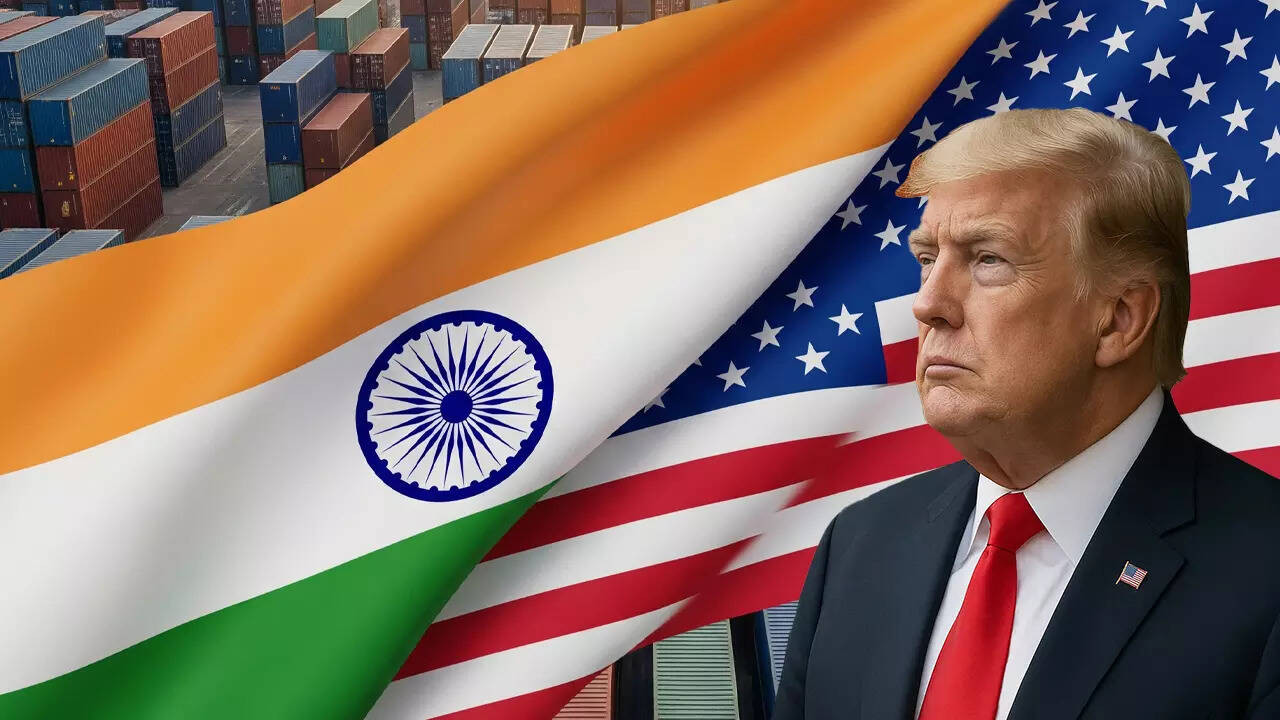The US economy experienced a 0.2% contraction in the first quarter of 2025, primarily due to a surge in imports ahead of President Trump’s tariff hikes. This decline, the first in three years, was partially offset by strong business investment and inventory buildup. A federal court blocked Trump’s tariffs, adding uncertainty to the economic outlook.
Uh Oh, Did the US Economy Just Hit a Speed Bump? Let’s Decode the Q1 Contraction
Okay, folks, let’s talk money. Not the kind you find nestled between the couch cushions, but the big money – the stuff that shapes our jobs, our spending, and pretty much everything in between. The headlines are buzzing: the US economy shrank in the first quarter of this year. Not a huge landslide, mind you, but a definite contraction of 0.2%.
Now, numbers like that can feel a little abstract, right? Like reading a weather report from Mars. So let’s break it down. Instead of picturing charts and graphs, think of it like this: imagine you’re running a lemonade stand. If you’re selling less lemonade in Q1 (January to March) than you were last quarter, your little lemonade economy is shrinking. That’s essentially what happened to the much, much larger US economy.
But why the slump? Well, the report points to a few key culprits. Think of it like a detective novel where we’re trying to find out who dunnit.
First up, tariff-driven disruption. This is a fancy way of saying the ongoing trade wars and tariffs (taxes on imported goods) are messing with things. Businesses are less likely to invest and expand when there’s uncertainty about trade relations. They might be hesitant to order materials from overseas, or unsure if their export markets will remain open. It throws a wrench into the smooth operation of global supply chains. Remember that time you couldn’t find your favorite brand of peanut butter at the store because of a disrupted supply chain? Imagine that happening across the entire economy.
Then there’s the issue of weak imports. Now, typically, robust imports are a sign of a healthy, consuming economy. People are buying things, businesses are stocking shelves, and goods are flowing freely across borders. A drop in imports could mean a slowdown in demand, or it could suggest businesses are struggling to obtain the goods they need due to those pesky tariffs mentioned earlier. It’s a bit of a “chicken or the egg” scenario, and disentangling the exact cause and effect is tricky.
And let’s not forget reduced spending. This is perhaps the most intuitive piece of the puzzle. If people aren’t buying things, the economy suffers. Maybe people are feeling less confident about their job security, or perhaps they’re just tightening their belts in response to rising inflation. Either way, less spending means less demand, which in turn puts a damper on economic growth. Remember how everyone rushed out to spend their stimulus checks? When that stops, the economy feels it.
Now, before we all start panicking and hoarding toilet paper (again!), it’s crucial to keep things in perspective. One quarter of contraction doesn’t necessarily spell doom and gloom. Economies are complex beasts, and they go through cycles of growth and contraction.
Furthermore, the underlying picture might not be as bleak as the headlines suggest. For example, the report might be painting an incomplete picture. Are there specific sectors that are struggling more than others? What about the labor market? Are jobs still being created? These are all critical questions that need to be answered before we can draw any definitive conclusions.
It’s also worth remembering that economic data is often revised. The initial numbers we’re seeing today could be adjusted in the coming weeks and months. It’s like getting an early draft of a book – things can change significantly before the final version is published.
So, what does all this mean for you and me? Well, it’s a good reminder to stay informed and pay attention to what’s happening in the broader economy. It might be wise to review your own budget and spending habits, just to make sure you’re prepared for any potential economic headwinds.
Looking ahead, it will be crucial to see how policymakers respond to this contraction. Will they take steps to stimulate demand, perhaps through infrastructure spending or tax cuts? Or will they focus on addressing the underlying issues causing the slowdown, such as trade disputes and inflation?
Ultimately, the fate of the US economy hinges on a complex interplay of factors. While this Q1 contraction is certainly cause for concern, it’s not necessarily a sign of a full-blown recession. It’s more like a yellow light on the economic highway – a signal to proceed with caution and keep an eye on the road ahead. And maybe, just maybe, start thinking about dusting off your lemonade-making skills… just in case.
📬 Stay informed — follow us for more insightful updates!







